detail profile andr c3 a9 valmy
Peran Yang Di Mainkan André Valmy
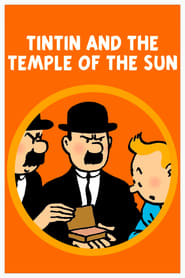 When seven archaeologists find an ancient...
When seven archaeologists find an ancient...Tintin and the Temple of the Sun 1969
When seven archaeologists find an ancient Inca temple, they become victims of an ancient curse. Back in Europe, one by one they fall into a deep sleep and only once a day, all at the same time, they wake up for a few minutes and experience hallucinations where the sinister living mummy of Rascar Capac appears.
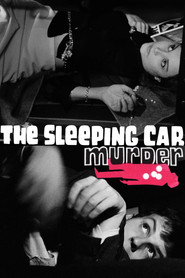 Six people travel by train overnight...
Six people travel by train overnight...The Sleeping Car Murder 1965
Six people travel by train overnight from Marseilles to Paris. When the train arrives at its destination, one of the passengers, a girl, is found dead in a sleeping berth. The police led by Inspector Grazzi investigate the other five passengers, suspecting that one of them was responsible. However, as the investigation is stepped up, the other passengers start turning up dead. It is then up to the last remaining two to solve the case, before they become the next victims.
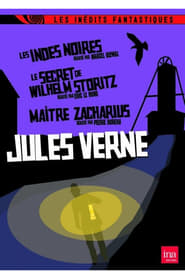 In 1870s Scotland mining engineer James...
In 1870s Scotland mining engineer James...The Black Indies 1964
In 1870s Scotland mining engineer James Starr is asked by former colleague Simon Ford, who's living inside the abandoned Aberfoyle mine, to help solve mysterious occurrences taking place inside the mine.
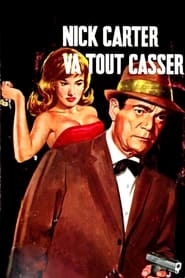 Didier Formenter the French scientist has...
Didier Formenter the French scientist has...License to Kill 1964
Didier Formenter, the French scientist, has just put the final touch on an invention that will be able to destroy to destroy any sort of flying apparatus. An international crime gang is very interested in stealing this equipement to sell it to the higher bidder of lawless nations. Menaced, the scientist, who was friends with Nick Carter's father, calls Nick for help. At Nice airport, Nick Carter escapes death, but that night he is unable to stop Formenter's murder. He suspects Bruno, Formenter's adoptive son, and Tonio, the owner of a bar near Formentier's home. Bruno is actually after Formenter's heritage, and for that he tries to kill Catherine, Formentier's granddaughter. Therefore, Nick Carter finds himself against more than a gang, but he will uncover the plots, in time to break every gangster apart.
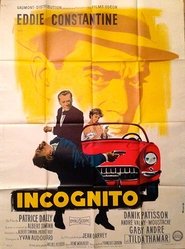 Bob Stanley was an American secret...
Bob Stanley was an American secret...Incognito 1958
Bob Stanley was an American secret agent during World War II in France. After the war Stanley returns to France as a consul. In reality, he works for the FBI, to roll up the organization that manufactures fake U.S. dollars. A violent confrontation is insurmountable.
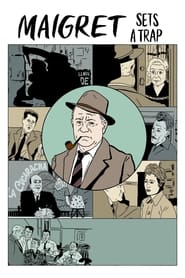 Four women were murdered each was...
Four women were murdered each was...Maigret Sets a Trap 1958
Four women were murdered, each was knifed and, though they had their clothes torn, they weren't molested. As the famed police inspector Jules Maigret pieces the clues together, he comes to realize that for the elusive man that he suspects to be unmasked, he has to set him a trap.
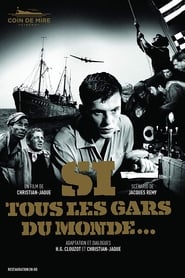 A distress call from a trawler...
A distress call from a trawler...If All the Guys in the World... 1956
A distress call from a trawler leads various people to come to the crew's aid.
 At the end of the Great...
At the end of the Great...The Secret of Helene Marimon 1954
At the end of the Great War, the wounded Jacques Taillandier is cared for by the beautiful Hélène Marimon and becomes her lover. He hides from her the fact that her husband is a comrade from the trenches, and only reveals the truth when he learns of Marimon's death. Outraged, Hélène drives him away. After many years, Jacques reappears to learn that Hélène had once given him a daughter. Hélène, unwilling to reveal anything to young Dominique, forces the man she loves to leave her country. Dominique not only gets her mother to talk, but also reunites those separated by fate.
 The title of this French reality...
The title of this French reality...Before the Deluge 1954
The title of this French "reality" drama, which translates to Before the Deluge, is a play on Louis XVI's famous prognostication, "Apres moi, le deluge." Set in 1950, the film concentrates on five Parisian adolescents. Certain that the next war will herald the apocalypse, the youngster make plans to run off to a desert island and set up a new society. This, however, will require money, which is why the boys decide to pull off a "necessary" robbery. Idealism collapses in the face of cold reality, as the five youths suffer from the consequences of their actions. Avant le Deluge was one of a group of films cowritten by director Andre Cayatte and Charles Spaak which endeavored to explore the touchy social issues of the day: others in the Cayatte-Spaak canon include the euthanasia-themed Justice est Faite and the capital-punishment tract Nous sommes tous des assassins.
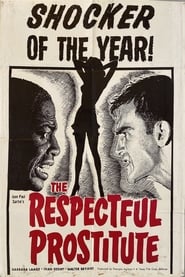 Fred the nephew of a senatorhas...
Fred the nephew of a senatorhas...The Respectful Prostitute 1952
Fred, the nephew of a senator,has murdered a Black man on a train. The two only witnesses are Lizzie McKay, a prostitute from New York, and Sidney, a colored man. Fred decides to seduce Lizzie in order to make her give false evidence according to which Sidney has attempted to rape her. The uncle also puts pressure on the young woman. After much hesitation, Lizzie finally accepts but Sidney, who has nearly got lynched, takes refuge at her home...
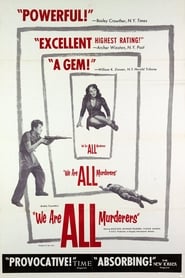 Originally titled Nous Sommes Tout des...
Originally titled Nous Sommes Tout des...We Are All Murderers 1952
Originally titled Nous Sommes Tout des Assassins, We Are All Murderers was directed by Andre Cayette, a former lawyer who detested France's execution system. Charles Spaak's screenplay makes no attempt to launder the four principal characters (Marcel Mouloudji, Raymond Pellegrin, Antoinine Balpetre, Julien Verdeir): never mind the motivations, these are all hardened murderers. Still, the film condemns the sadistic ritual through which these four men are brought to the guillotine. In France, the policy is to never tell the condemned man when the execution will occur--and then to show up without warning and drag the victim kicking and screaming to his doom, without any opportunity to make peace with himself or his Maker. By the end of this harrowing film, the audience feels as dehumanized as the four "protagonists." We Are All Murderers was roundly roasted by the French law enforcement establishment, but it won a special jury prize at the 1952 Cannes Film Festival.
 During the Second World War Georges...
During the Second World War Georges...Mission in Tangier 1949
During the Second World War, Georges Masse undergoes a dangerous mission by taking secret documents from Tangiers to London.
 Port of Marseille France recently liberated...
Port of Marseille France recently liberated...Manon 1949
Port of Marseille, France, recently liberated from the German yoke. Caught as stowaways aboard a ship, Manon, a young woman who was accused of collaborating with the Nazis, and Robert, a freedom fighter who saved her from reprisals, tell the captain about the many challenges they have had to face in order to survive.

 DArtagnan and his musketeer comrades must...
DArtagnan and his musketeer comrades must...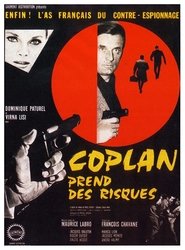 In a factory working for the...
In a factory working for the... Go Paquet aka The Gorilla breaks...
Go Paquet aka The Gorilla breaks...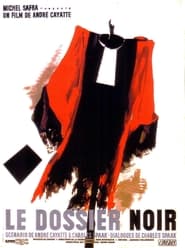 In the 1950s in a small...
In the 1950s in a small... Fates of multiple otherwise disconnected characters...
Fates of multiple otherwise disconnected characters...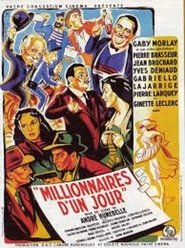 A typographer makes a mistake by...
A typographer makes a mistake by...